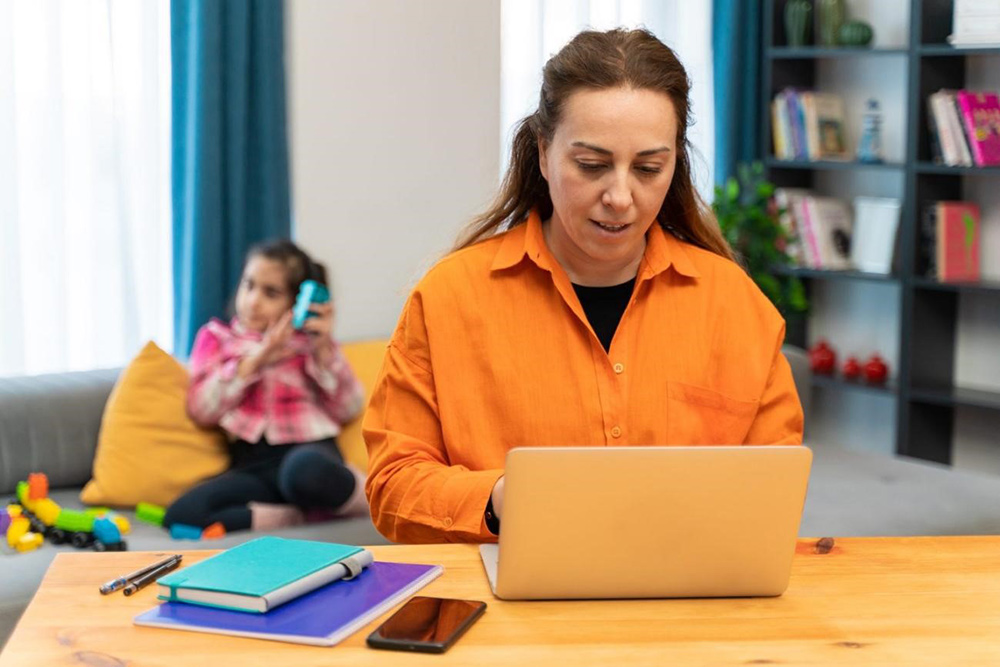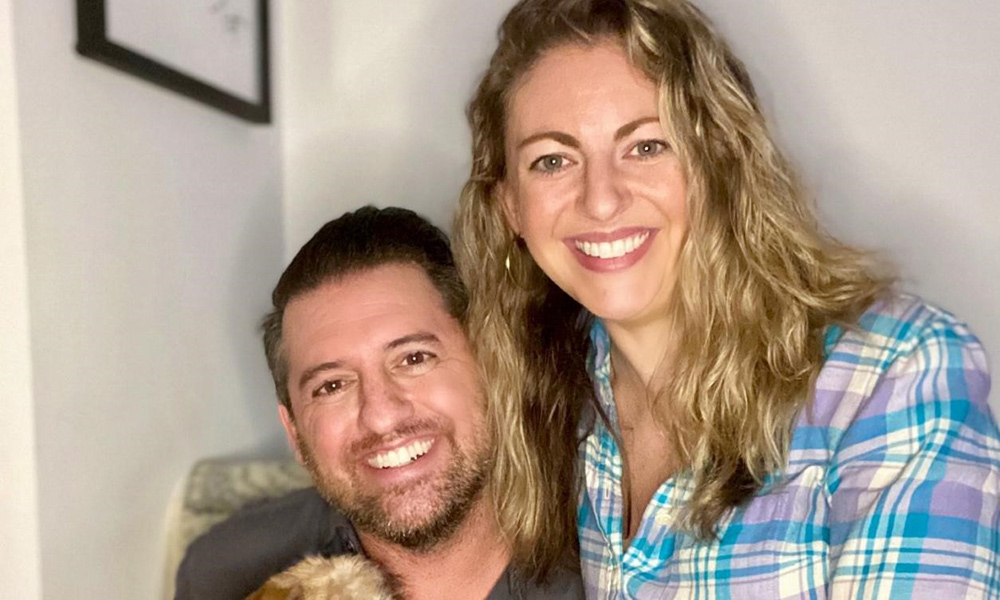
美國總統(tǒng)喬·拜登可能發(fā)布行政命令,降低美國家庭的育兒成本,,但對于已經(jīng)背負這項成本的人而言,,育兒成本不僅高昂,而且在持續(xù)上漲,。
美國總統(tǒng)拜登周二簽署了一項行政命令,,要求從衛(wèi)生及公共服務部到國防部等聯(lián)邦部門,確定和執(zhí)行降低育兒成本和普及育兒服務的方法,。該命令基于今年早些時候拜登政府執(zhí)行的指令,。政府要求芯片制造商提供育兒服務,才能獲得390億美元資金,。
雖然此舉得到了許多兒童護理從業(yè)者的支持,,但這與政府此前的承諾相去甚遠。拜登政府曾承諾幫助美國低收入家庭支付育兒費用,,并撥款在全國執(zhí)行普及學前教育項目等,。
對于目前面臨困境的家庭而言,這些指令并沒有解決他們的問題,。育兒成本過高,,平均每年養(yǎng)育一名兒童的成本約為10,600美元,這已經(jīng)達到令家庭難以承受的地步,。而且據(jù)2023年紐約人壽財富觀察(New York Life Wealth Watch)的調查顯示,,過去一年,超過三分之一家長(37%)的育兒成本持續(xù)上漲,。報告發(fā)現(xiàn),,家長支付的育兒成本,約占家庭收入的26%,。
紐約人壽(New York Life)財務健康總監(jiān)蘇珊娜·施米特對《財富》雜志表示:“高育兒成本或者缺少可負擔的育兒服務,,可能破壞家庭的長期財務安全,而通貨膨脹所導致的成本上漲可能加重家庭的負擔,。兒童護理取決于工作場所和社會的支持,,因為兒童護理行業(yè)面臨嚴峻挑戰(zhàn),這對下游的家長產(chǎn)生了影響,。”
育兒成本對家庭的影響
來自紐約市的勞倫·阿卡多有一個18個月大的兒子,,對她來說,,每周的育兒成本約為300美元,,這只是半托的費用。為了降低日托費用,,阿卡多和丈夫變得非常忙碌,,他們采取混合辦公的模式,白天從事行政助理,,然后分別從事浪漫小說家和脫口秀喜劇演員的第二職業(yè),。
但即使半托每個月約1,200美元的費用,也是一筆沉重的負擔,。阿卡多說道:“日托完全打亂了我們的財務生活,。”阿卡多承認,,這并不是長久之計,。她表示,他們已經(jīng)不得不認真考慮全托服務,。

阿卡多表示:“這種情況難以持久,。在參加電話會議的時候,如果你的同事在背景中聽到埃爾莫的聲音,,或者聽到孩子叫喊,,你不得不道歉。雖然人們能夠理解,,但你依舊在工作,,還是要保證每天八個小時全身心投入?!?/p>
但全托意味著阿卡多和丈夫需要重新計劃家庭預算,。她說道:“我們在不斷掙扎?!?/p>
紐約人壽調查發(fā)現(xiàn),,約三分之一(34%)承擔更高育兒成本的家長,為了維持預算不得不削減其他家庭支出,,另有23%的家長像阿卡多一樣,,利用混合或遠程辦公模式。超過一半家長(59%)表示,,過去一年修改了財務策略,,而非家長改變財務策略的比例只有41%。
當然,,在兒童疾病更頻發(fā)的時候,,利用日托也可能存在困難。如果阿卡多的兒子生病,這意味著她需要把孩子留在家里,。然后夫妻兩人就得討論該由誰放棄工作照顧孩子,。
阿卡多表示:“我丈夫是一位脫口秀喜劇演員,他有時候要四處奔波,。我曾經(jīng)遭遇過孩子生病無法去日托,,丈夫去了外地,但我卻需要全天工作的情況,。因此,,我要么自己請病假,或者找朋友過來照顧我兒子,?!?/p>
缺少可負擔的穩(wěn)定育兒服務,不僅影響了家長的預算,,還會影響他們的職業(yè),。阿卡多表示:“一方面是財務問題,另一方面是時間問題,,但如果有更多機會可以享受到可負擔的育兒服務,,我就可以花更多時間從事自己所熱愛的項目?!?/p>
阿卡多表示,,如果能負擔全托的費用,她可以有更多時間發(fā)展自己的事業(yè),。(財富中文網(wǎng))
翻譯:劉進龍
審校:汪皓
美國總統(tǒng)喬·拜登可能發(fā)布行政命令,,降低美國家庭的育兒成本,但對于已經(jīng)背負這項成本的人而言,,育兒成本不僅高昂,,而且在持續(xù)上漲。
美國總統(tǒng)拜登周二簽署了一項行政命令,,要求從衛(wèi)生及公共服務部到國防部等聯(lián)邦部門,,確定和執(zhí)行降低育兒成本和普及育兒服務的方法。該命令基于今年早些時候拜登政府執(zhí)行的指令,。政府要求芯片制造商提供育兒服務,,才能獲得390億美元資金。
雖然此舉得到了許多兒童護理從業(yè)者的支持,,但這與政府此前的承諾相去甚遠,。拜登政府曾承諾幫助美國低收入家庭支付育兒費用,并撥款在全國執(zhí)行普及學前教育項目等,。
對于目前面臨困境的家庭而言,,這些指令并沒有解決他們的問題。育兒成本過高,平均每年養(yǎng)育一名兒童的成本約為10,600美元,,這已經(jīng)達到令家庭難以承受的地步,。而且據(jù)2023年紐約人壽財富觀察(New York Life Wealth Watch)的調查顯示,過去一年,,超過三分之一家長(37%)的育兒成本持續(xù)上漲。報告發(fā)現(xiàn),,家長支付的育兒成本,,約占家庭收入的26%。
紐約人壽(New York Life)財務健康總監(jiān)蘇珊娜·施米特對《財富》雜志表示:“高育兒成本或者缺少可負擔的育兒服務,,可能破壞家庭的長期財務安全,,而通貨膨脹所導致的成本上漲可能加重家庭的負擔。兒童護理取決于工作場所和社會的支持,,因為兒童護理行業(yè)面臨嚴峻挑戰(zhàn),,這對下游的家長產(chǎn)生了影響?!?/p>
育兒成本對家庭的影響
來自紐約市的勞倫·阿卡多有一個18個月大的兒子,,對她來說,每周的育兒成本約為300美元,,這只是半托的費用,。為了降低日托費用,阿卡多和丈夫變得非常忙碌,,他們采取混合辦公的模式,,白天從事行政助理,然后分別從事浪漫小說家和脫口秀喜劇演員的第二職業(yè),。
但即使半托每個月約1,200美元的費用,,也是一筆沉重的負擔。阿卡多說道:“日托完全打亂了我們的財務生活,?!卑⒖ǘ喑姓J,這并不是長久之計,。她表示,,他們已經(jīng)不得不認真考慮全托服務。
阿卡多表示:“這種情況難以持久,。在參加電話會議的時候,,如果你的同事在背景中聽到埃爾莫的聲音,或者聽到孩子叫喊,,你不得不道歉,。雖然人們能夠理解,但你依舊在工作,還是要保證每天八個小時全身心投入,?!?/p>
但全托意味著阿卡多和丈夫需要重新計劃家庭預算。她說道:“我們在不斷掙扎,?!?/p>
紐約人壽調查發(fā)現(xiàn),約三分之一(34%)承擔更高育兒成本的家長,,為了維持預算不得不削減其他家庭支出,,另有23%的家長像阿卡多一樣,利用混合或遠程辦公模式,。超過一半家長(59%)表示,,過去一年修改了財務策略,而非家長改變財務策略的比例只有41%,。
當然,,在兒童疾病更頻發(fā)的時候,利用日托也可能存在困難,。如果阿卡多的兒子生病,,這意味著她需要把孩子留在家里。然后夫妻兩人就得討論該由誰放棄工作照顧孩子,。
阿卡多表示:“我丈夫是一位脫口秀喜劇演員,,他有時候要四處奔波。我曾經(jīng)遭遇過孩子生病無法去日托,,丈夫去了外地,,但我卻需要全天工作的情況。因此,,我要么自己請病假,,或者找朋友過來照顧我兒子?!?/p>
缺少可負擔的穩(wěn)定育兒服務,,不僅影響了家長的預算,還會影響他們的職業(yè),。阿卡多表示:“一方面是財務問題,,另一方面是時間問題,但如果有更多機會可以享受到可負擔的育兒服務,,我就可以花更多時間從事自己所熱愛的項目,。”
阿卡多表示,,如果能負擔全托的費用,,她可以有更多時間發(fā)展自己的事業(yè),。(財富中文網(wǎng))
翻譯:劉進龍
審校:汪皓
President Joe Biden may be issuing executive orders to blunt the cost of childcare for American families, but for those in the thick of it, the costs not only hit hard, they keep rising.
President Biden signed an executive order on Tuesday directing a wide range of federal agencies—from the Department of Health and Human Services to the Department of Defense—to identify and implement ways to cut childcare costs and make services more accessible. The move builds on directives implemented by the administration earlier this year that mandated chip manufacturers provide childcare in order to get access to the $39 billion in funding.
While many in the childcare community applauded the move, it’s a far cry from earlier promises to help cover childcare for low-income Americans and fund universal preschool programs nationwide.
And for families struggling right now, the directives may fall short. Childcare costs are already prohibitively expensive for families—averaging around $10,600 per child, per year. Yet more than a third of parents (37%) have seen their childcare costs continue to jump over the past year, according to the 2023 New York Life Wealth Watch survey. The report found that among parents who pay for childcare, they spend about 26% of their household income on this expense.
“High-cost childcare—or a lack of affordable childcare—can be disruptive to families’ long-term financial security, and increases in costs due to inflation can add up,” Suzanne Schmitt, head of financial wellness at New York Life, tells Fortune. “Childcare hinges on workplace and societal support, as the childcare sector has faced significant challenges, which has had a downstream effect on parents.”
Childcare expenses hit families hard
For New York City–based mother Lauren Accardo, childcare expenses take about $300 out of the budget per week—and that’s just for part-time childcare for her 18-month-old son. To help keep day-care costs down, Accardo and her husband juggle their time, working hybrid schedules at their day jobs as executive assistants, then fitting in their second careers as a romance novelist and stand-up comedian, respectively, where they can.
But the roughly $1,200 a month expense on even part-time day care is a heavy burden. “Day care has completely disrupted our lives financially,” Accardo says. And it’s really not a long-term solution, Accardo admits, saying they’ve hit a point where they’re seriously considering full-time care.
“It’s just not tenable,” Accardo says. “You’re on a conference call, and you have to apologize because either your coworkers are hearing Elmo in the background or they’re hearing your kid scream. And as understanding as people are, you’re still at work, you’re still trying to get a full eight-hour day in,” she says.
But full-time day care means Accardo and her husband will need to reconfigure their budget again. “It’s been a constant struggle,” she says.
About a third (34%) of parents who are facing higher childcare costs have been forced to cut back on other household expenses to make their budgets work, while 23% say, like Accardo, they’re leveraging a hybrid or remote work model, according to the New York Life research. Over half of parents (59%) report their financial strategy changed in the past year compared with just 41% of nonparents.
Of course, utilizing day care can also be a struggle during a time when childhood illnesses feel more frequent. If Accardo’s son is sick, that means she needs to keep him home. Then it becomes a conversation of who watches him, who stays out of work.
“My husband is a stand-up comic, where he is sometimes on the road. I’ve had situations where the baby’s sick and can’t go to day care, my husband’s out of town, and I am expected to work a full day. So I either have to take sick time myself or try and find a friend to come over and watch him,” Accardo says.
The lack of affordable, stable childcare takes a toll—not only on parents’ budgets, but also on their careers. “It’s partially finances, and it’s partially time, but with more opportunities for affordable childcare I could spend more time on my passion projects,” Accardo says.
If full-time childcare was an affordable option, Accardo says she might have more time to herself to really push her career forward.






